The transfer window season is well underway now – even Chelsea have awoken from their slumber. £222m of spending last season has preceded a few months in pursuit of Erling Haaland this summer. No sign of making an actual signing in sight until news broke that Sevilla and Chelsea had opened talks for Jules Koundé as the main target for a new centre-back at Stamford Bridge. Going the other way – at least according to initial reports – was Kurt Zouma, but there are murmurs his eyes are being turned by West Ham’s interest in him, preferring to stay in London than move to Spain and learn a new language.
The 22-year-old joined Sevilla from Bordeaux in the summer of 2019 after two years in the French side’s first team since the age of 18-years-old. He hit the ground running in Seville, quickly becoming one of the elite defenders in the division within a year of joining. He joins a star-studded list of French ball-playing centre-backs plying their trade in Europe’s top five leagues. This scout report will look into why the Paris native has gained so many plaudits.
In this tactical analysis, we will cover his role at Sevilla, where he excels, where he is limited, and where he might fit into Thomas Tuchel’s system.
Player profile
Koundé began his playing career in 2004 as a six-year-old with Fraternelle de Landiras, a local boys club with who he keeps in touch with to this day – he is the cover star of their Facebook page. A brief stint at Cérons followed before he joined FC La Brède in 2010, with who he would stay for three years before being spotted by Girondins Bourdeaux’s youth scouts. It is a journey typical of many professional footballers, but that makes it no less arduous and a credit to his determination.
He joined a team that just finished 7th in Ligue 1, as well as winning the Coupe de France, much better than the current financially-stricken Bourdeaux of 2021. He made his league debut in January 2018 versus Troyes – a game Bourdeaux would keep a clean sheet and win 1-0. From that point, Koundé would play all but two matches until the end of the season. It would precede a 37-game season with the French club and a €25m move to Sevilla.
Standing at 5’10” / 178cm, he transitioned comfortably for a defender who had only played his football in France up until that point. You’ll note that 5’10” is quite short for a centre-back, and it is quite rare to have shorter defenders excel in the Premier League, but it’s not impossible. Potential future teammate and club captain César Azpilicueta has played some of his best football as a right centre-back in a back three. Koundé, with his diverse skill set, could easily do the same.
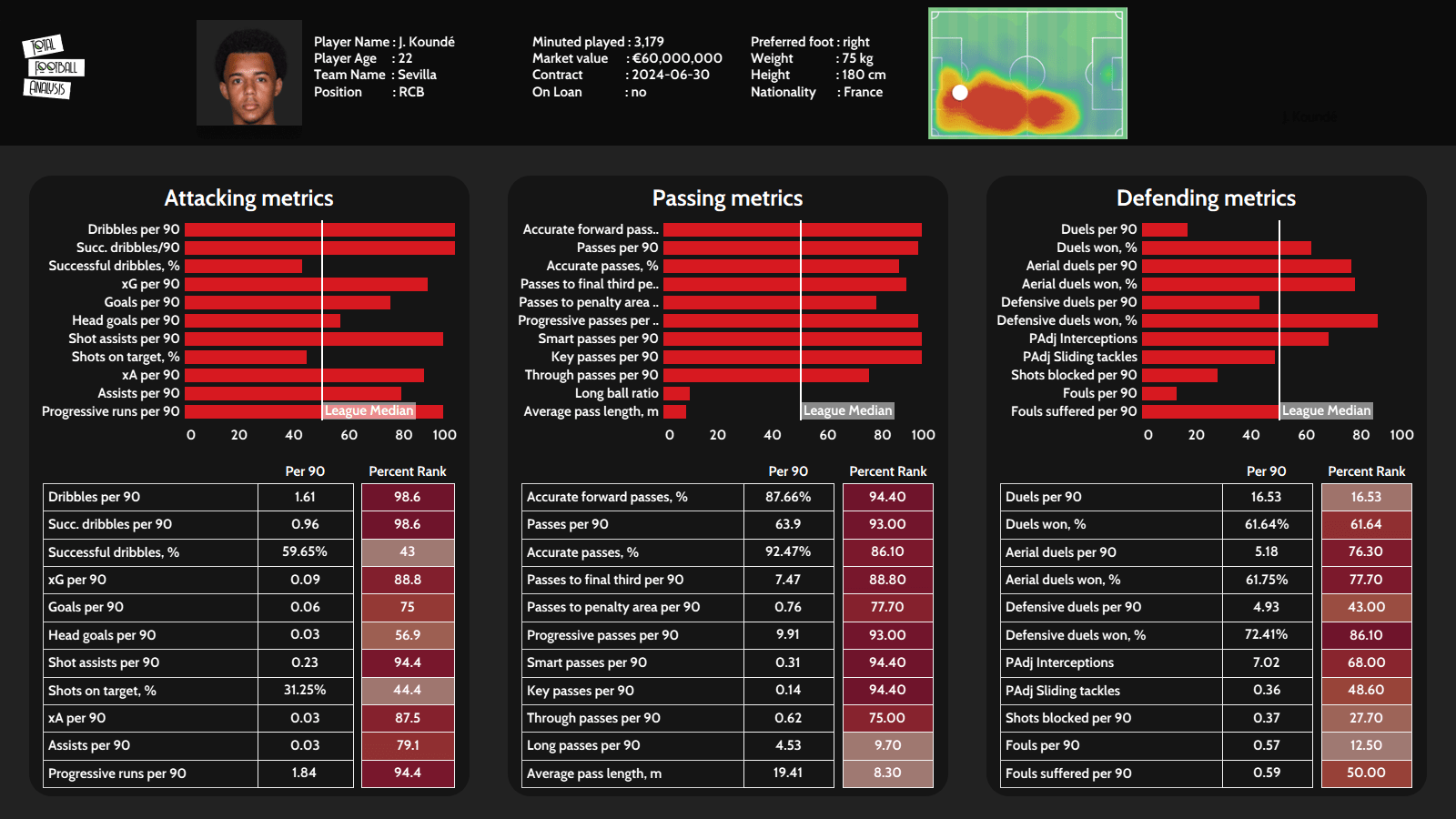
Jules Koundé’s player profile created by the wonderful Sathish Prasad (@SathishPrasadVT on Twitter).
5’10” but not physically inadequate
Koundé potentially joins a reasonable list of players who performed well against Chelsea in European competition and were purchased by the Blues. Mohamed Salah, Kevin De Bruyne, Hakim Ziyech, Willian, the list goes on. He played right-back in that fixture, but his best position, despite his height, is at centre-back. He doesn’t struggle tremendously in the air, and he is utterly dominant in his ground duels.
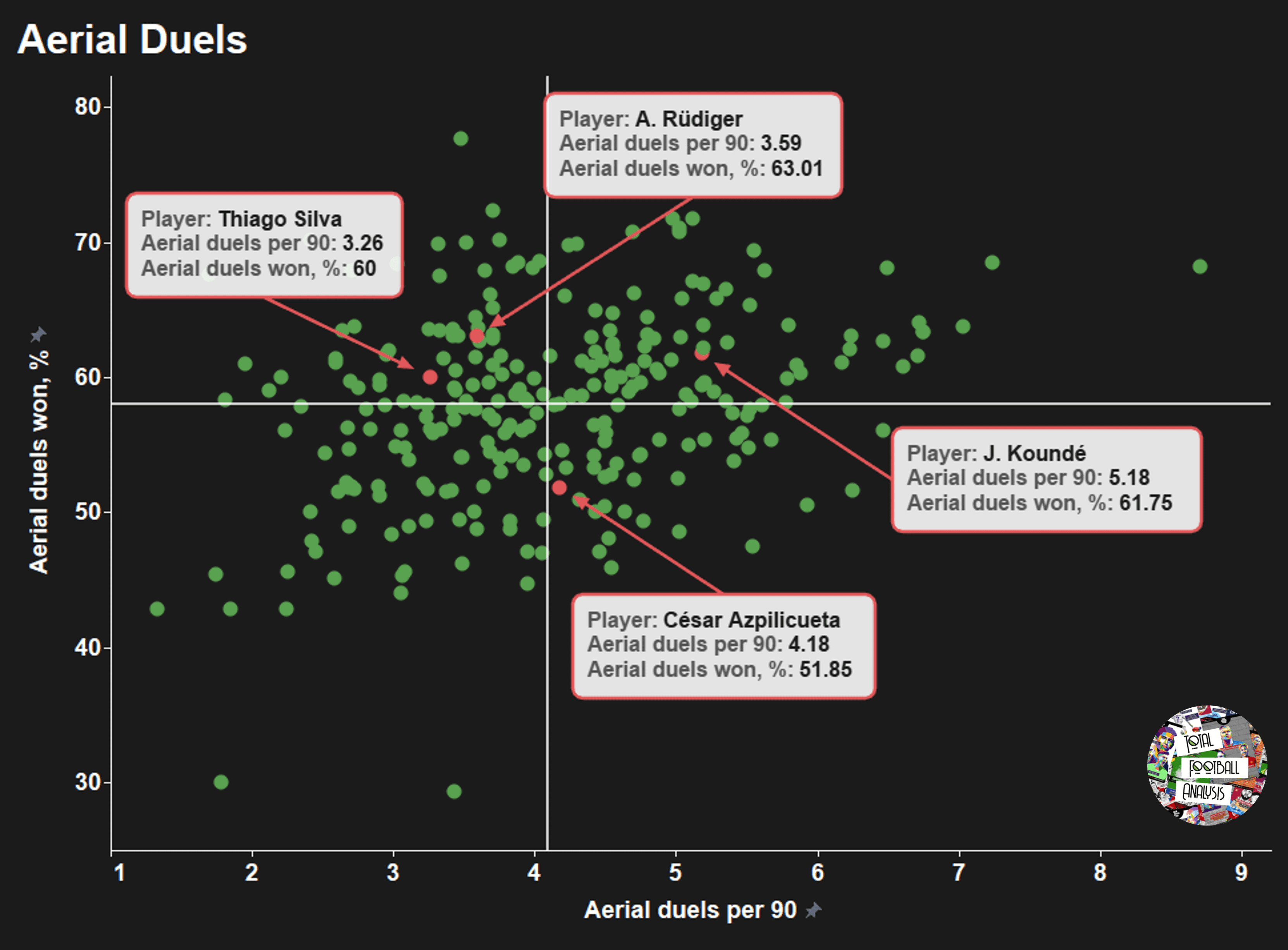
Europe’s top five leagues centre-backs with 1500+ 20/21 league minutes played aerial duels per 90 compared with aerial duel win %.
What we can understand from this plot is that Koundé ranks amongst the highest for aerial duels volume, and adequately for success rate. 5.18 aerial duels per 90 at a 61.75% success rate is very solid, and representative of a player who has been undersold on an aerial front in the wake of rumours to Chelsea due to his height. Thiago Silva, Ben Mee, Ezri Konsa, Ben Godfrey, are a few players who have performed to a high level in the Premier League in recent years – yet all of them are 6’0” or below.
Since Koundé is such an athlete, he can leap higher than his opponents, and his timing of jumps is seldom faulted. In the 19/20 campaign, his aerial duel success rate was an even higher 74.5%, one of the best figures in the division. Not to say he has regressed from that season though, the same pattern occurred in his two seasons at Bordeaux. Hard to gather why there is such a decrease outside of slightly increased volume and different tactical instructions via Julen Lopetegui.
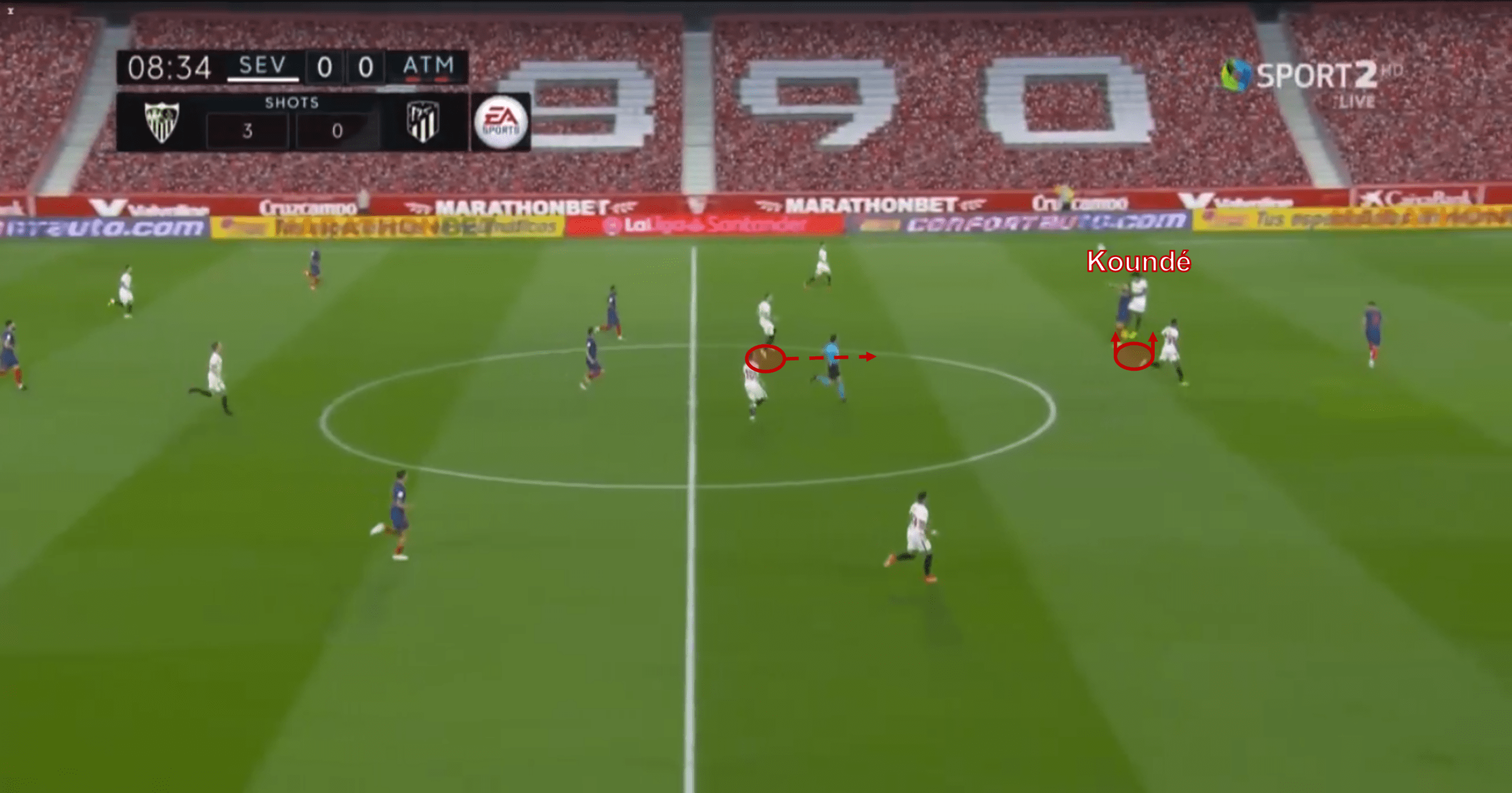
Here the Frenchman outleaps his opponent from behind, heading towards the midfielder ahead.
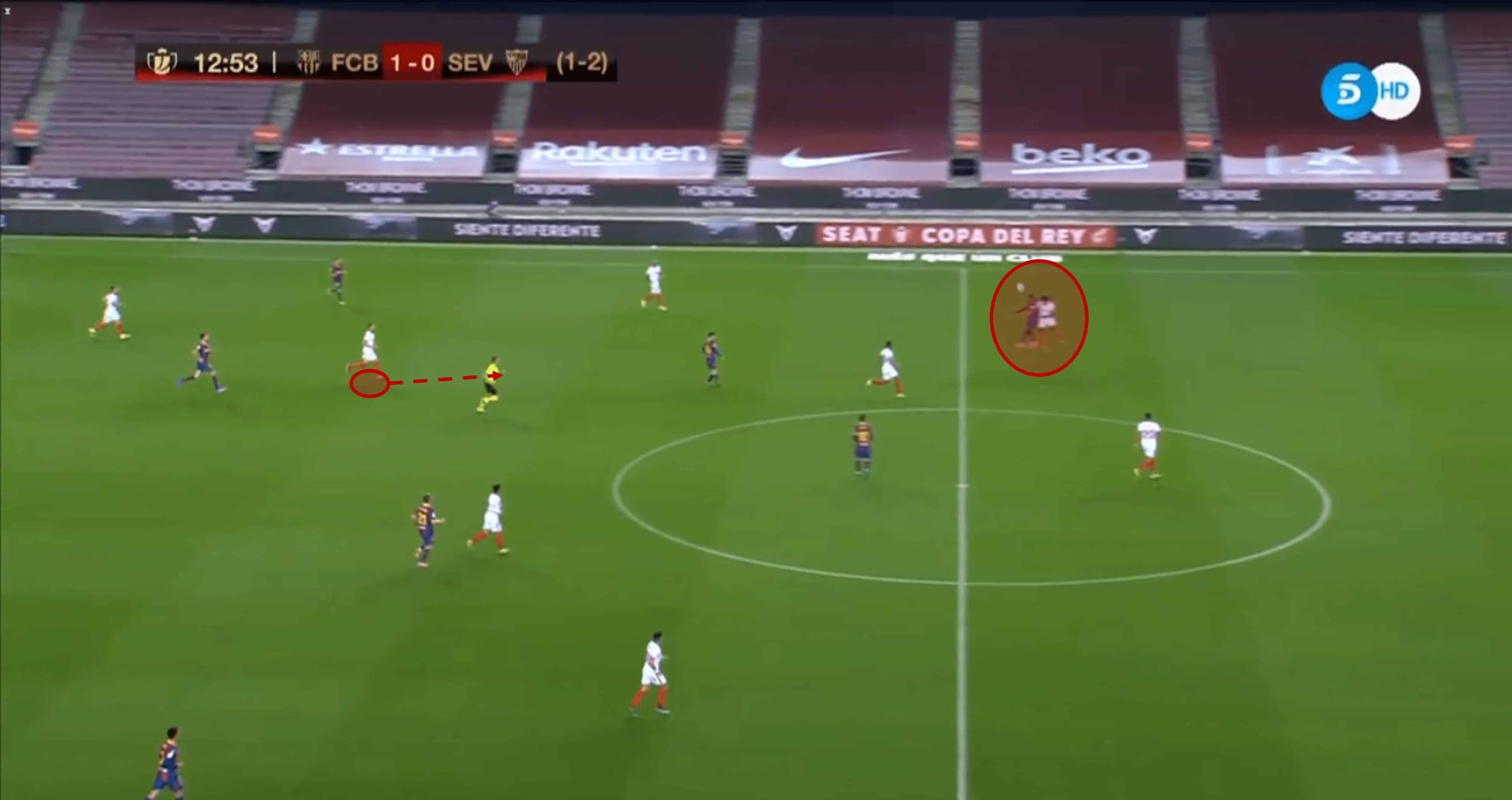
Again from behind, the 22-year-old outleaps his opponent and heads the ball quite a distance ahead of him and past a couple of Barca players in the process.
Koundé excels aerially when he has time to project the flight of the ball, ruffle up his opponent, and make sure he outleaps them, but he can struggle with crosses struck with more pace and venom. For example, from corner kicks, if the set-piece taker whips a fast delivery into the area, Koundé seldom has the reaction time to deal with the cross capably.
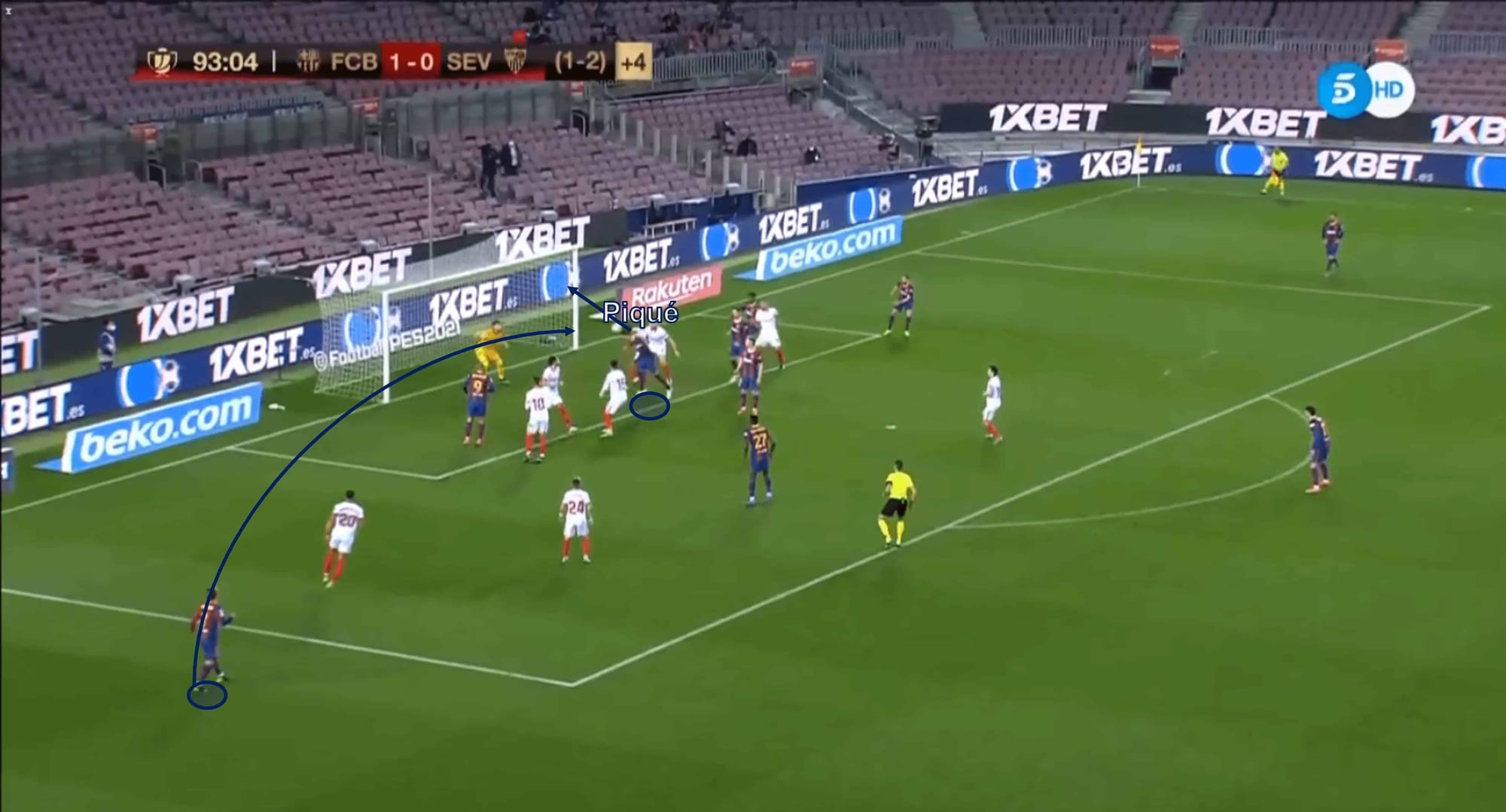
Behind Piqué and out of position, Koundé is wrongsided by the Spaniard and the whipped delivery is struck with such pace that he has little time to react, with Piqué scoring as a result.
Yet, from attacking set-pieces, such as corners, Koundé can also be an attacking threat at the other end. He usually judges the flight of the ball well, and he doesn’t struggle to beat taller defenders in the air using his timing and movement. His goal against Celta Vigo was a testament to the type of threat he can present opposition defences – his headed efforts are accurate and powerful, finding the target more often than not it seems.
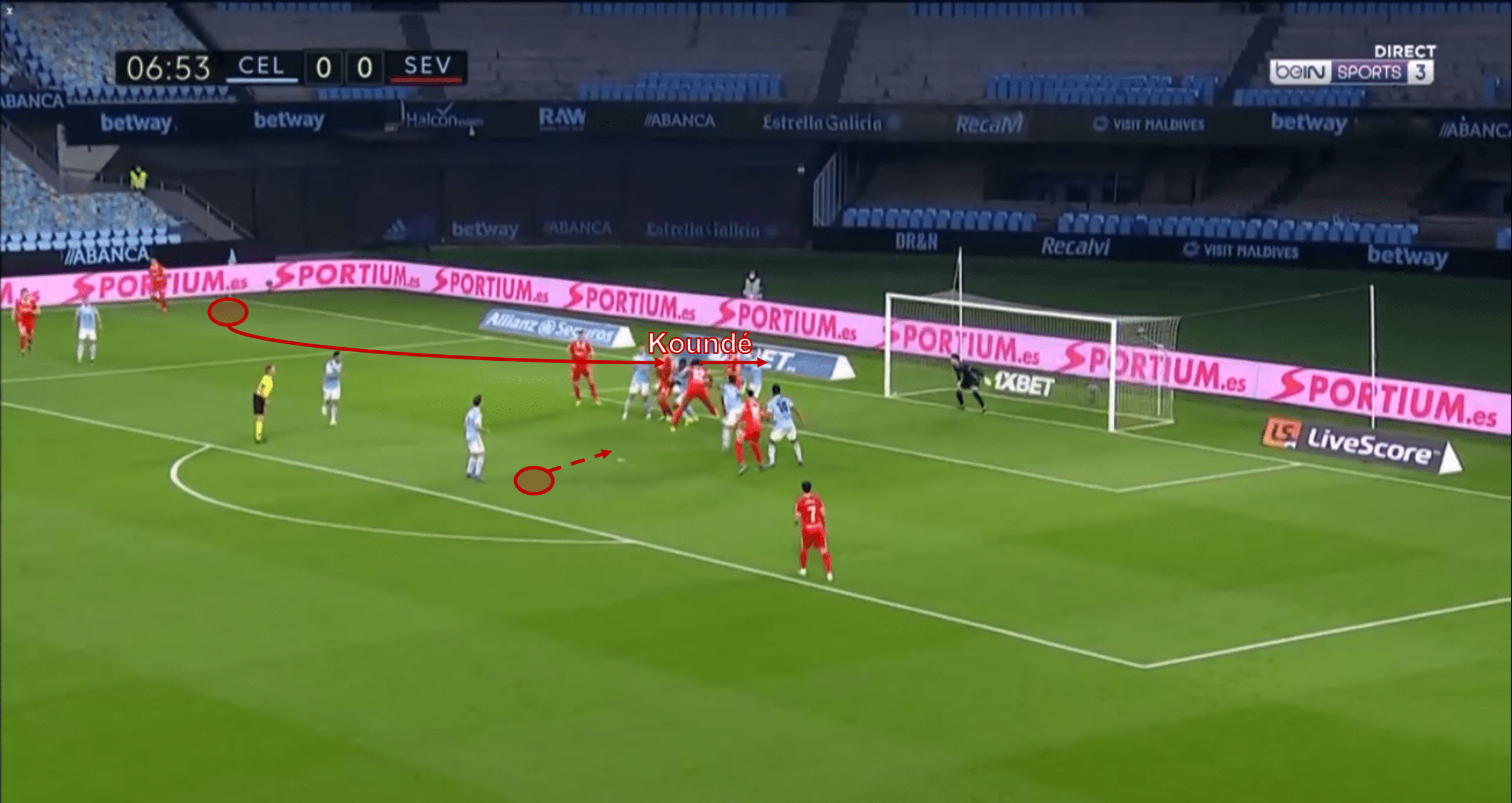
Against Celta, the Frenchman struck the ball with his head with such ferocity that the keeper had no chance of saving it. Walloped.
Where the 22-year-old particularly shines is in his ground duels. He won 43.5% of his tackles versus dribblers, as well as a 45.5% pressure success rate, which is in the 99th percentile across Europe’s top five leagues for centre-backs. Admittedly the volume on both of these statistics is lower than your average La Liga defender, but with Joan Jordán and Fernando ahead of him screening the backline and hoovering up possession frequently, Koundé had less to do. With N’Golo Kanté in midfield at Chelsea, we can expect a similar story at Stamford Bridge.
When Koundé does have defending to do, he does so on the front foot, and for such a young footballer, he has a good understanding of how to operate his body in a smart way to regain possession. This is the potential advantage to being a smaller-than-average defender is that you can command your frame in a more controlled manner than someone 6’0” or above. Koundé is certainly able to make small defensive adjustments that are unique to him as a defender.
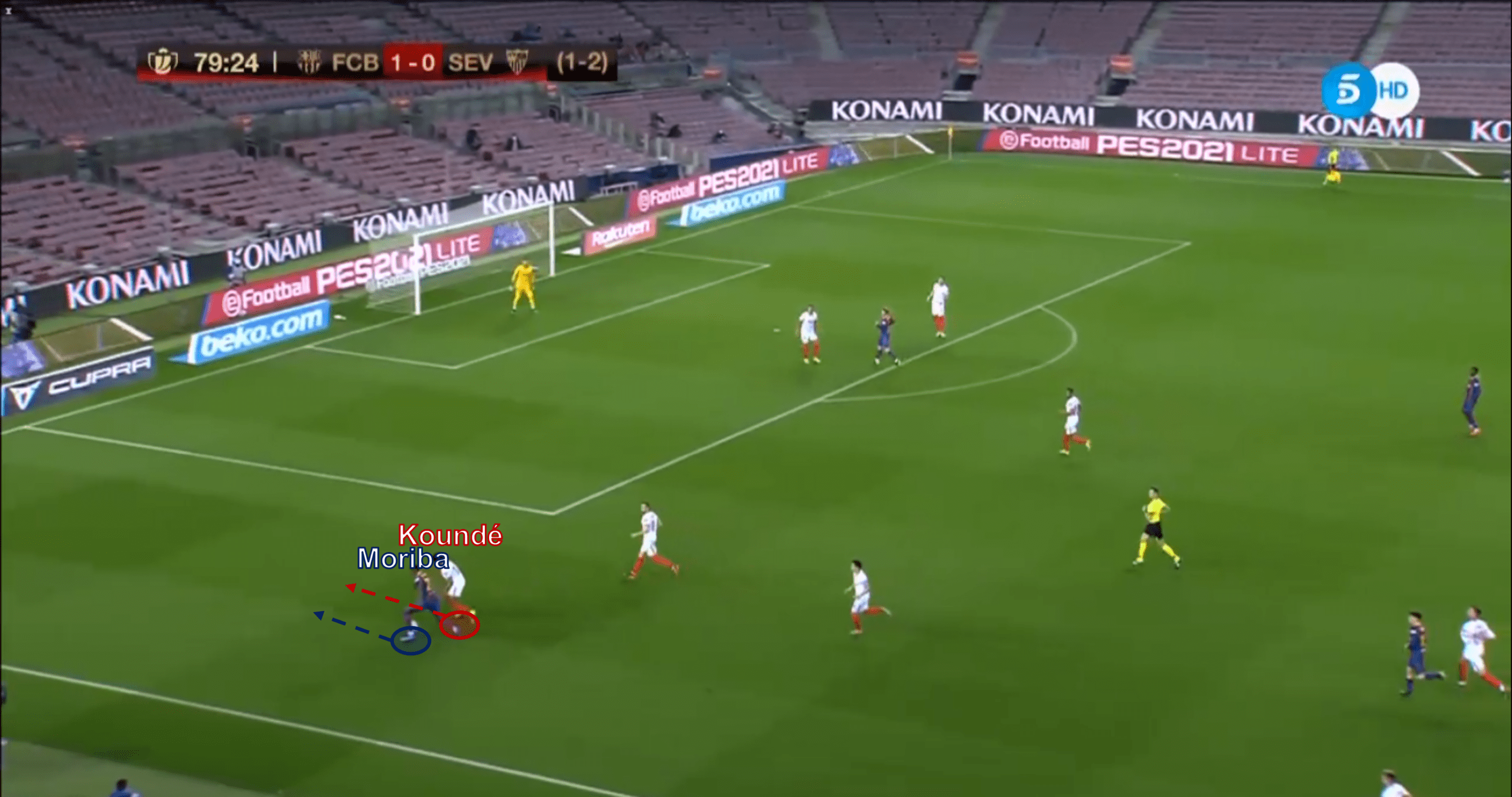
Up against Illaix Moriba, the 22-year-old has to be very careful to not foul the tricky attacker but also cut off any crossing opportunities.
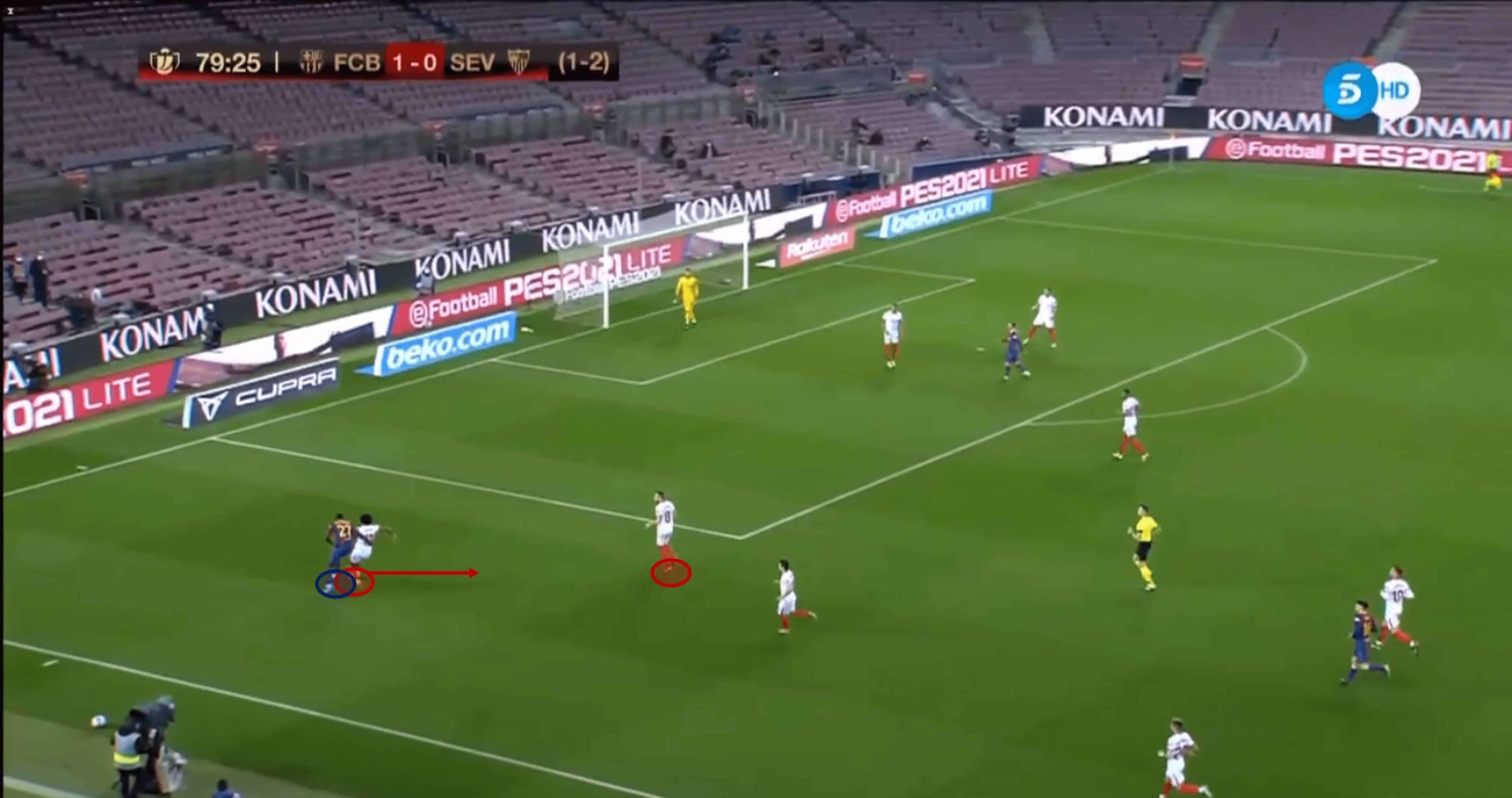
He wins the ball back comfortably, positioning his body in between the ball and the player, before swiftly releasing the ball to a nearby teammate.
From a defensive perspective, there should be no worries coming from the Blues fans. Although Koundé is sold as a progressive centre-back, first and foremost he is a resolute and adaptable defender. On the right of a back three – where he is expected to start – we should see him battle smaller attackers in the air, increasing his success rate, and he is agile and smart enough to prevent tricky wingers from getting into the penalty area and causing danger.
Bulldozing ball-carrying from the back
The one eye-catching side to Koundé’s game is his ability to carry the ball up the field with his feet. But truly, it is one method of ball progression within his varied repertoire. They are as gasp-worthy as they are majestic, but there is a sense that he loves to surprise his opponents and it is a wildly useful method of ball progression given its shock value to break the lines.
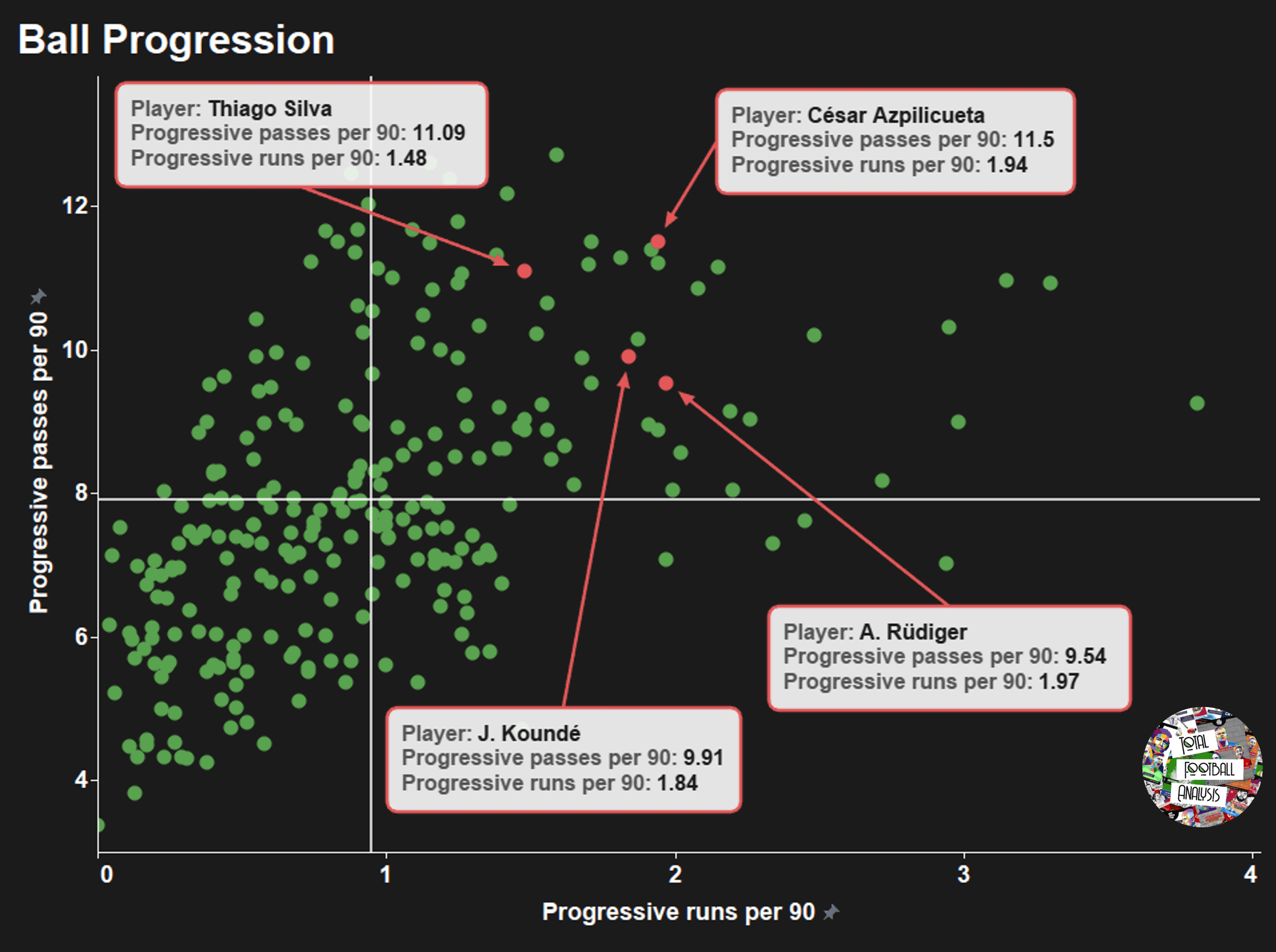
Europe’s top five leagues centre-backs with 1500+ 20/21 league minutes played progressive passes per 90 compared with progressive runs per 90.
To dive into more advanced statistics – Koundé attempts 1.24 dribbles per 90 at a 71.7% success rate, completes 5.54 progressive carries, with 1.47 of those being into the final third and penalty area. He goes beyond just carrying the ball out of defence, often venturing into the attacking portion of the field. It’s a key facet of his game which is supported by a solid defensive structure at Sevilla.
He has the pace to burst into midfield and open options further up the pitch. It can occasionally lead to the Frenchman losing a duel here or there in midfield, but it overall brings a huge benefit to his team, and as a result, should not be deterred from attempting them. He hits his stride in a Harry Maguire or Antonio Rüdiger type way – and then takes it twenty yards further.
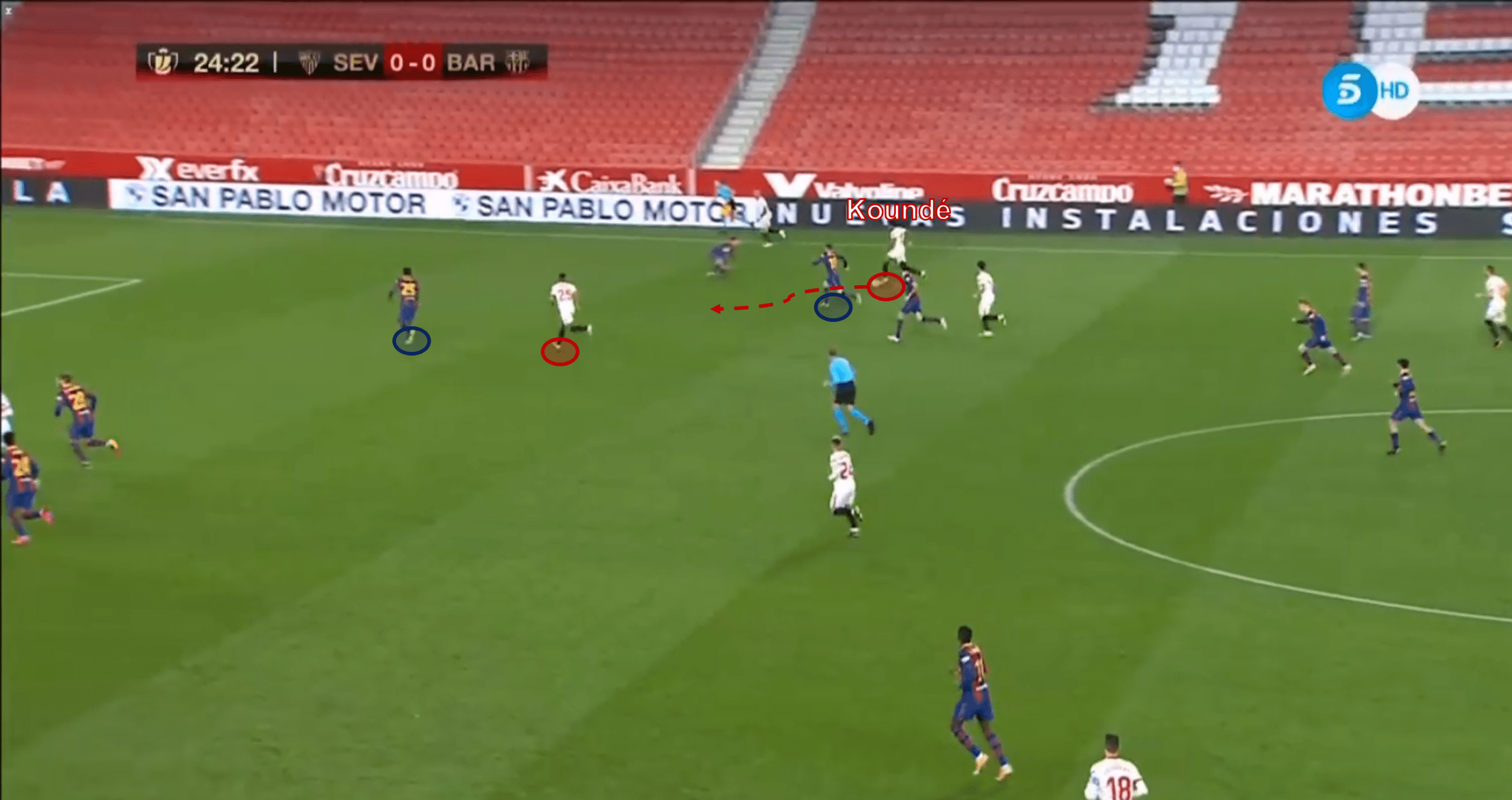
He begins his dribble inside Barca’s half, with several players ahead of him to go past.
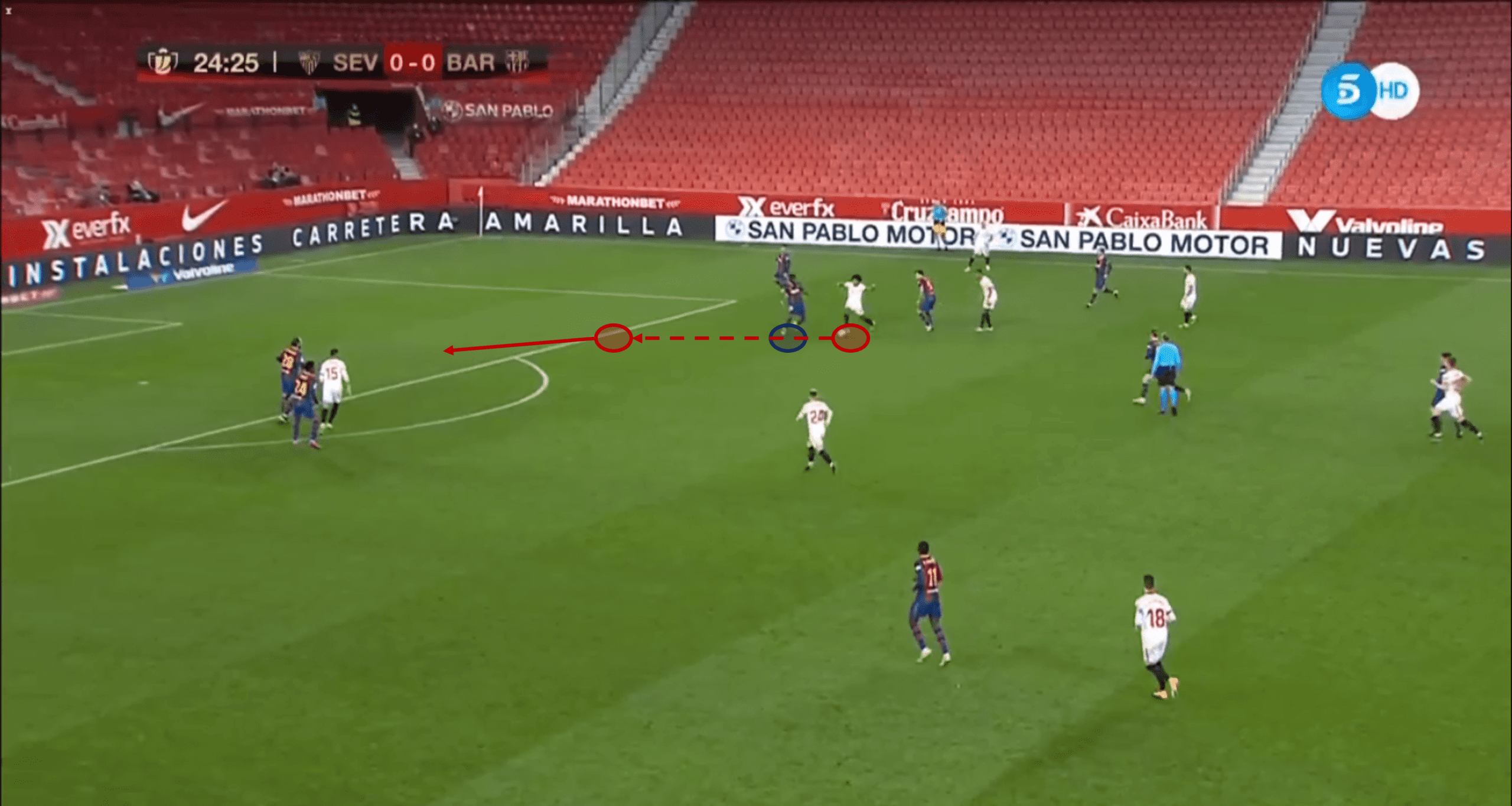
He takes it past two, before striking on goal and scoring a crucial cup goal.
As shown above, these mazy runs can occasionally precede a shot or even a goal. A crucial one against Barcelona in the Copa Del Rey at that. More often is the case that the 22-year-old carries the ball past the first line of pressure and looks to use his varied passing range to spark Sevilla attacking scenarios. In the 19/20 season, when Luuk De Jong played upfront, he spent a lot of time hitting direct balls into the chest or head of the Dutchman who would interplay with other forwards.
In the 20/21 season, these have more often been balls played down the channel to find one of Sevilla’s pacier forwards, such as Lucas Ocampos or Youssef En-Nesyri. He has demonstrated good vision to spot some of these runs in pressurised situations too. 4.98 passes into the final third are representative of his incisiveness and the range on lots of his progressive passes.
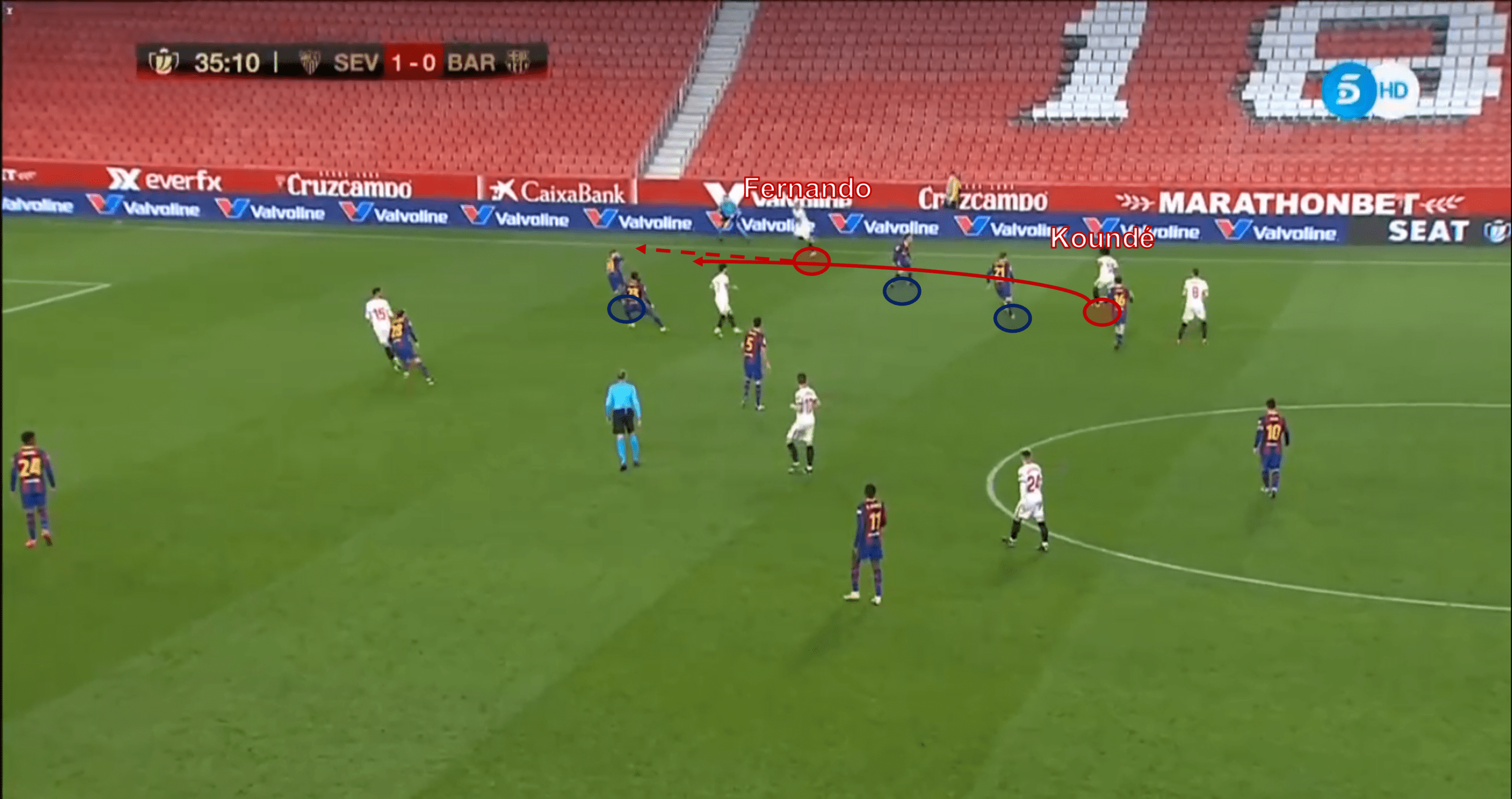
He wisely spots Fernando’s run down the right flank, and if the execution was better, a proper chance on goal was waiting.
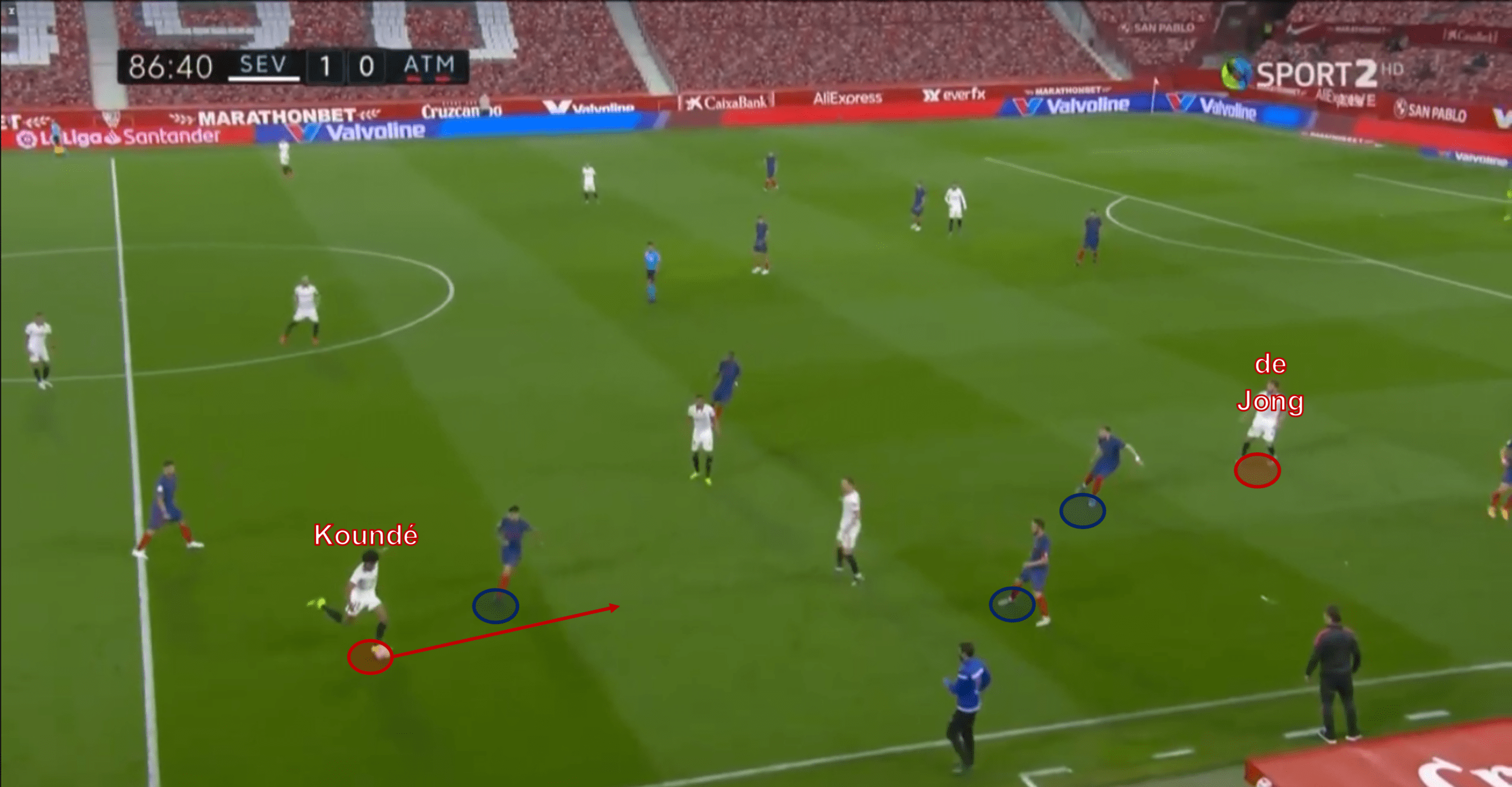
Here he hits the ball directly into the chest of Luuk de Jong, escaping opposition press.
From a ball progression perspective, Koundé represents one of the most well-rounded defenders in Europe. He is more than capable when dribbling with the ball, often surprising opposition defensive structures with his line-breaking ball-carrying that opens up space for Sevilla attackers to be found with a pass. When passing too – Koundé is seldom in the wrong. He can play lofty and direct passes into tall forwards as well as through passes with a nice weight and curve to them. If he does end up in Azpilicueta’s place in Chelsea’s team, he replaces his passing comfortably.
Where does he fit in at Chelsea?
As mentioned, it is expected that Koundé will slot in where Azpilicueta played when Tuchel came to the club. Under Lampard, Azpilicueta was much more of a rotational figure in the squad, but his passing, defending, and physical profile matched what Tuchel was looking for in a right centre-back within a back three. ‘Dave’ as he is affectionately named by Chelsea fans, is a similar height to Koundé at 5’10” but aerially the Spaniard is historically weaker than the 22-year-old.
As that right centre-back, Tuchel expects them to follow his meticulous set of principles when building out from the back. Chelsea under Tuchel are very patient in possession, not forcing any openings that could see them punished on the counterattack. Tuchel’s Chelsea had closer to 60% average possession of the ball compared to Lampard’s Blues that had 55% on average. Plenty of rotations in possession, patiently looking for the best routes forward, rather than relying heavily on any sort of counterattacking method of play.
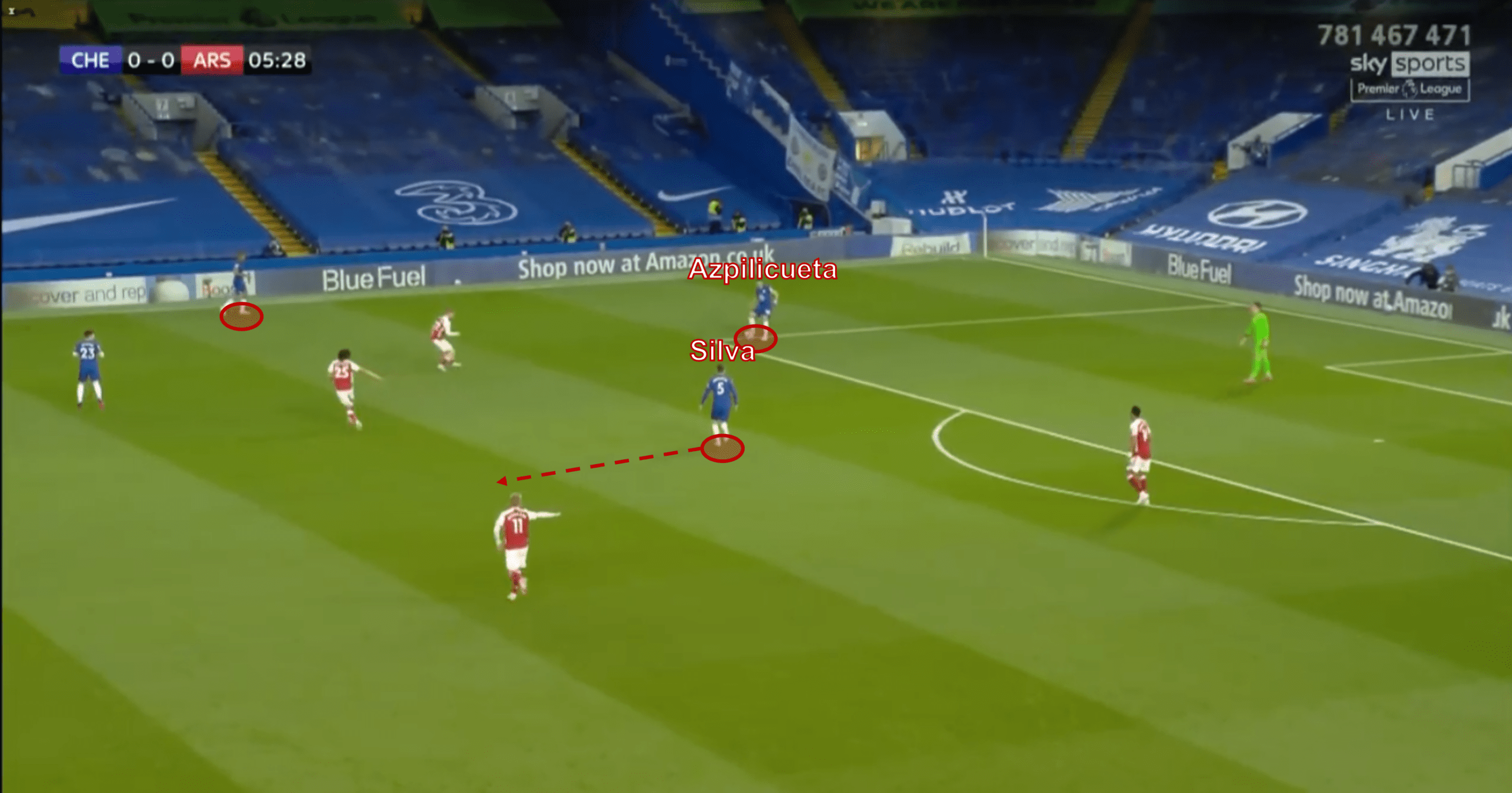
Azpilicueta plays the ball to Silva, who would regularly drive into midfield, acting as the main platform for ball progression out of the back for Chelsea typically.
It’s a build-up play not too dissimilar to Pep Guardiola’s Man City. It is part of the reason why Tuchel’s team have struggled to score goals consistently. Some of their best performances as a team have come where they have purposefully conceded possession to hit teams on the break. Their 2-0 victory in the UCL semi-final second leg versus Real Madrid springs to mind – they had just 32% of the ball in that match despite having the better of the chances on the night. Some xG models had the game in favour of Chelsea 3.5+ xG to Madrid’s 0.5.
What Koundé could provide is a more direct passing threat, sparking attacks directly from the backline for Chelsea, even chipping in with a few assists himself. His passing ambition has to be something that Tuchel has in mind – Koundé possesses good short-medium passing, but the big benefit you get from the Frenchman is his ability to play it long, directly into a target man or utilising his good vision to spot runners in behind. This could be Mason Mount at Chelsea.
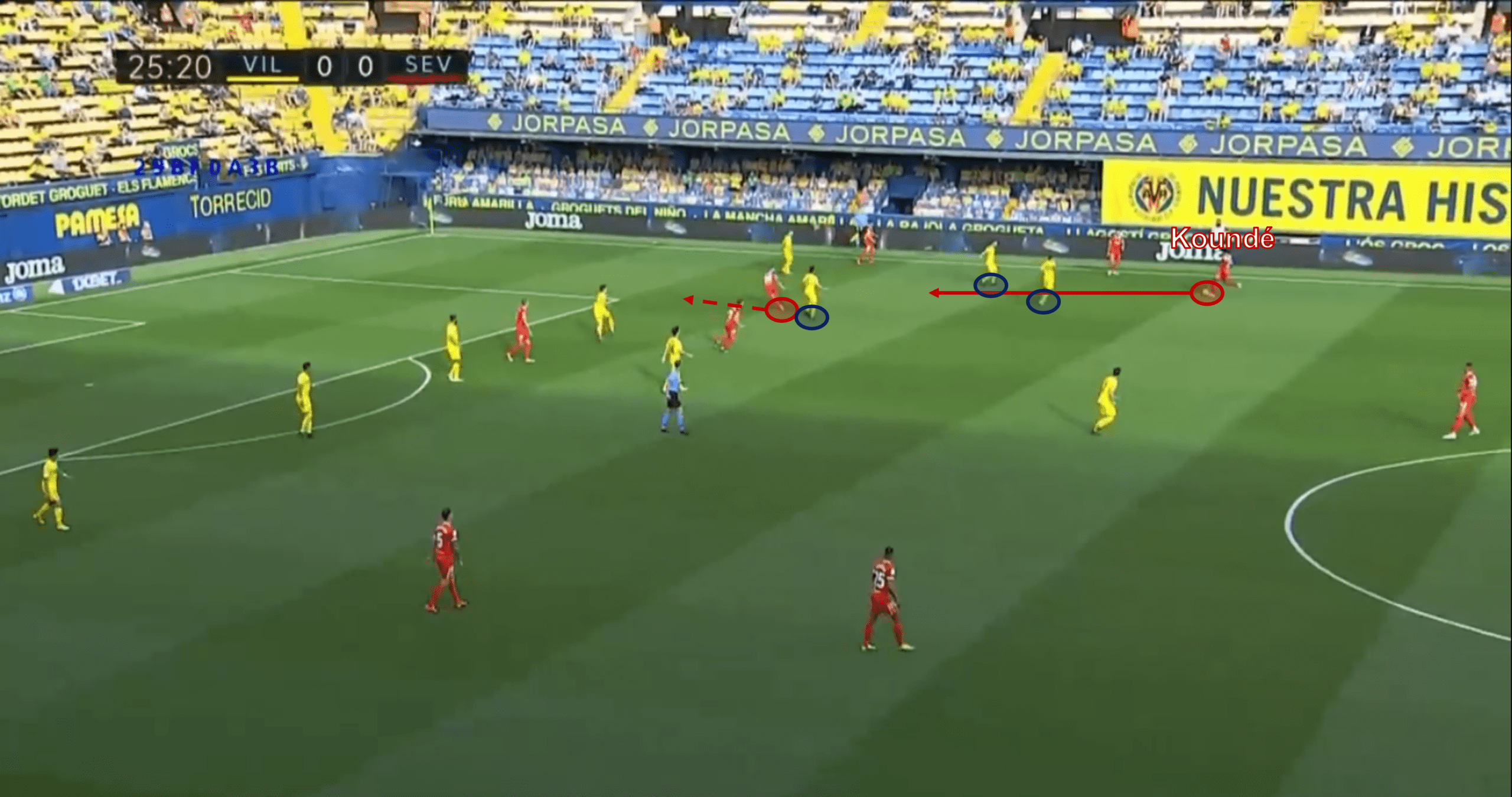
He plays a smart pass here, a line-breaking effort which directly preceded a chance created for Sevilla.
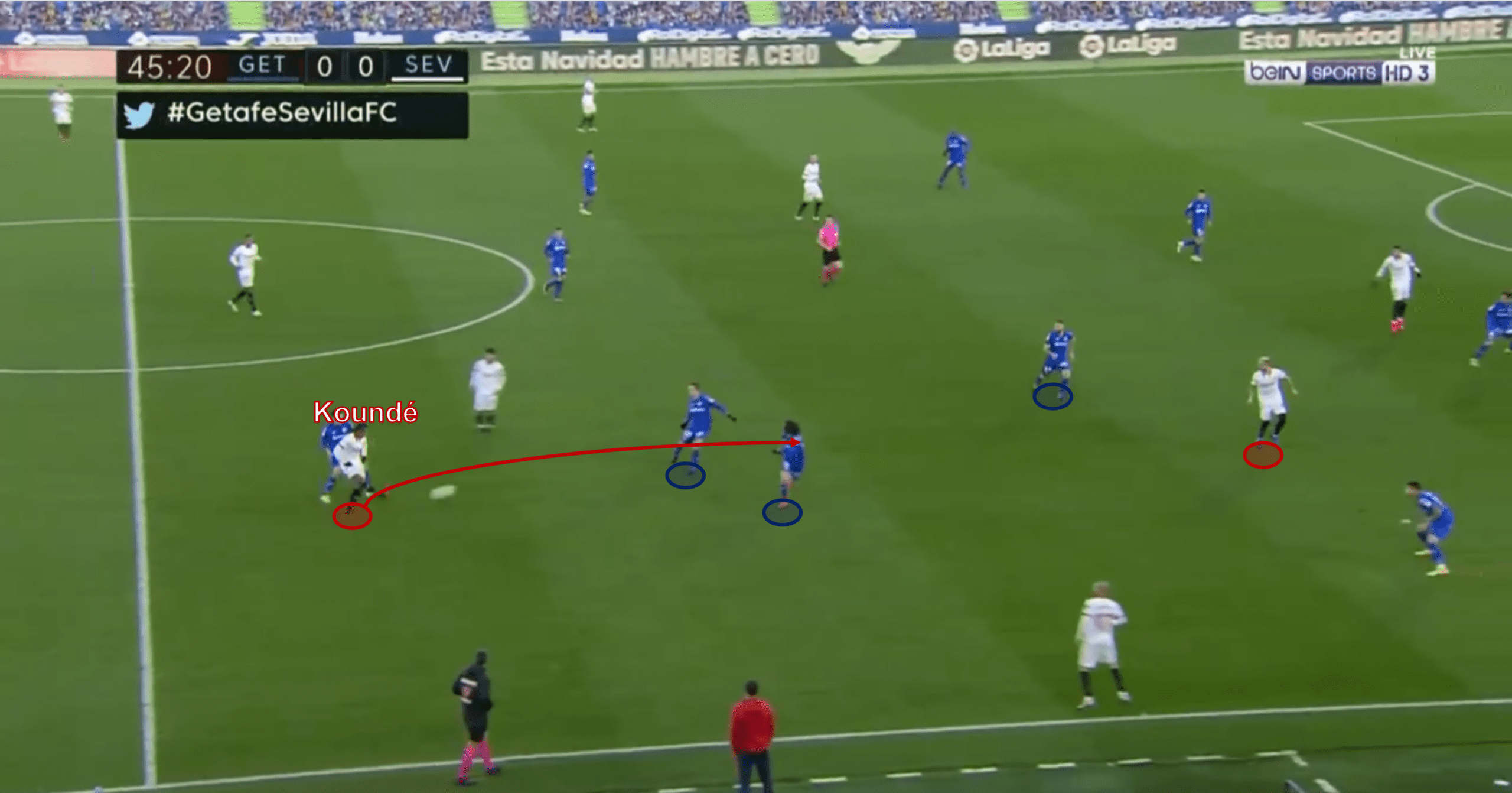
Again, he breaking the lines with his passing in this example here.
The idea behind playing Azpilicueta in a back three is his strength in 1v1 defending, a skill that Koundé shares with the Spaniard. Whilst Rüdiger and Thiago Silva are strong defenders in the air who remain inside the penalty area when opponents have the ball in wide areas, Azpilicueta can join James in those wider zones to defend, cutting off passing lanes and keeping tight to the opponent. Koundé can join and settle in quite quickly, knowing that if he is beaten 1v1 in those scenarios, there are two fantastic defenders yet in the way of the opponent from scoring.
Concluding thoughts
Koundé is one of the best young ball-playing centre-backs on the continent. His physical profile does not limit him as much as many fans would like to suggest, and his defensive work is nothing short of excellent most of the time. His only weakness in the Premier League might be up against tall target-men with strong movement, ones who might be able to move Koundé around a bit and get the best of him by looking to get crosses into the box.
At Chelsea, however, he should not find himself in many of these situations, given he is expected to start at right centre-back, which in Chelsea’s system, is seldom required to protect the six-yard-box. It should get the best out of his strong 1v1 defending, whilst also getting the best out of his license to roam forward and progress the ball up the pitch, breaking the lines with his fantastic passing range. Now, Sevilla have set an asking price of £68m, a fair margin over his £54m valuation on Transfermarkt. He would be a signing for both now, and the future, however. Given his track record of adapting to a new environment, one would suggest it’s a risk worth taking, given the tremendous upside.





Comments